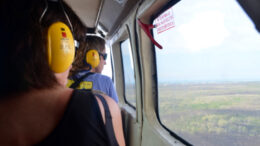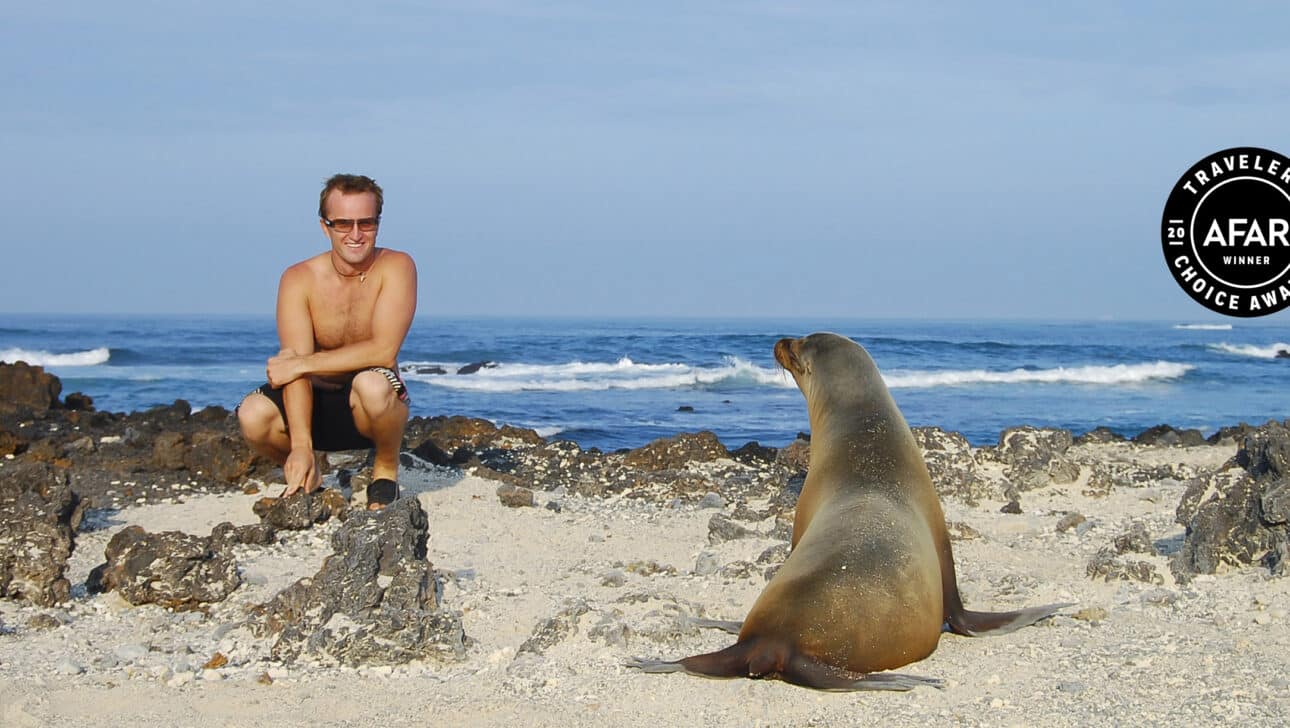Maybe you’ve ridden Land Rovers in search of a leopard. Or tiptoed through cloud forests to catch a quick glimpse of a resplendent quetzal. In Alaska, you might have even spotted a mile-away grizzly bear through binoculars.
But nowhere matches the Galápagos for the sheer magnetic excitement of encountering all the wildlife you hoped to see… up close and very, very personally.
When you’re with Classic Journeys, you can relax knowing that you will get the bucket-list wildlife interactions you came for. That’s why AFAR Magazine named our Galapagos trip Best Wildlife Encounter in the world in its Travelers’ Choice Awards.
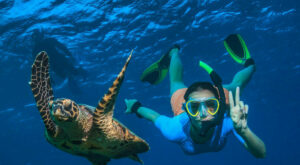
When you’re nature-watching here, nature watches right back.
And you might as well accept right now that you will be powerless to resist the head-on, whisker-twitching stare of a baby sea lion. You and your sea kayak are reflected in those giant dark eyes. You’re on her turf — or should we say surf? — and she could slip under the surface and zip away in a flash.
In many parts of the world, the creatures that attract nature-lovers are simply too rare or skittish or well-camouflaged or nocturnal to assure you a slam-dunk viewing experience.
Not so in the Galápagos. The blue-footed boobies and giant land tortoises and penguins you came to see are eminently see-able—if you’re in the right spots with the right people.
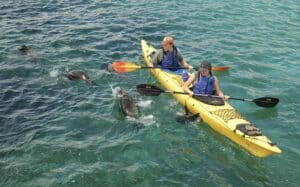
You guides are in their natural habitat, too.
You’ll be in the full-time company of amazingly knowledgeable and fun local guides who are highly trained and licensed naturalists. They know the coves and lava tunnels and volcanic slopes where the iguanas and flamingos roam.
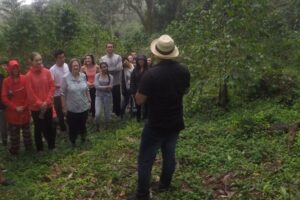
When Darwin first arrived on the Beagle, boats were the only way to see the Galápagos. Today, most tourists still arrive on cruise ships.
They head to shore on their Zodiacs (twice a day) and back to the confines of the boat (twice a day). That barely gives them a total of four hours of exploration time each day. By contrast, your island-based group will settle into luxury boutique hotels on the islands. On a Classic Journey, you get more elbow room and more chances to spot wildlife all day long … in fact, 24 hours a day!
In a small, mobile group it’s easier to get to more remote, less-visited sites that the cruise ship flotilla can’t reach. For example, cruisers default to a conveniently located wildlife center to cluster around giant land tortoises. You, on the other hand, get to go to the highland watering hole where the 500-pound beasts live, and you’ll get close enough to hear them breathe and chomp on grass. The face you capture in a ground-level photo could be 150 years old. That’s history looking back at you, and it’s truly a humbling moment.
Getting to these encounters is half the fun.
One day, you’ll climb into a flat-bottomed fishing boat called a panga to explore a cluster of small islets where Galápagos penguins live. The birds are unafraid and even curious. If you like, grab a mask and snorkel to go swimming with them in the super clear water. Of course, they will out-maneuver you, and you will have the time of your life being in the middle of it all. Another morning, you’ll make the acquaintance of those sea lions. But at the same time, the waters also draw stingrays, green sea turtles, a kaleidoscope of reef fish, and marine iguanas.
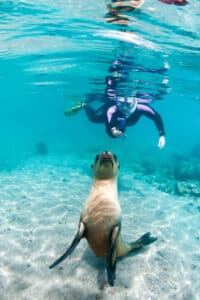
Sometimes it’s hard to know where to look first because the abundance is unlike anything you’ve ever seen out in the wild.
